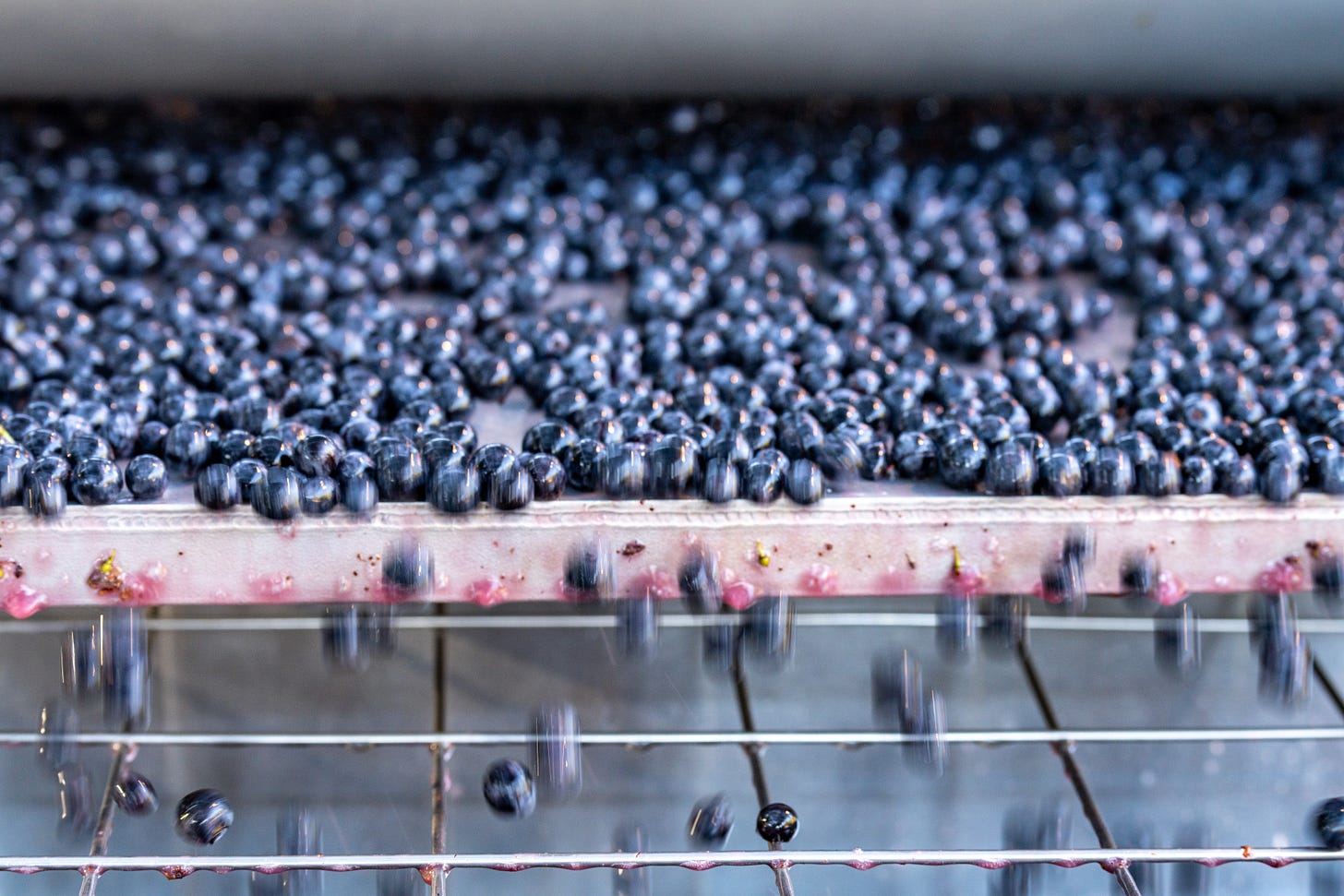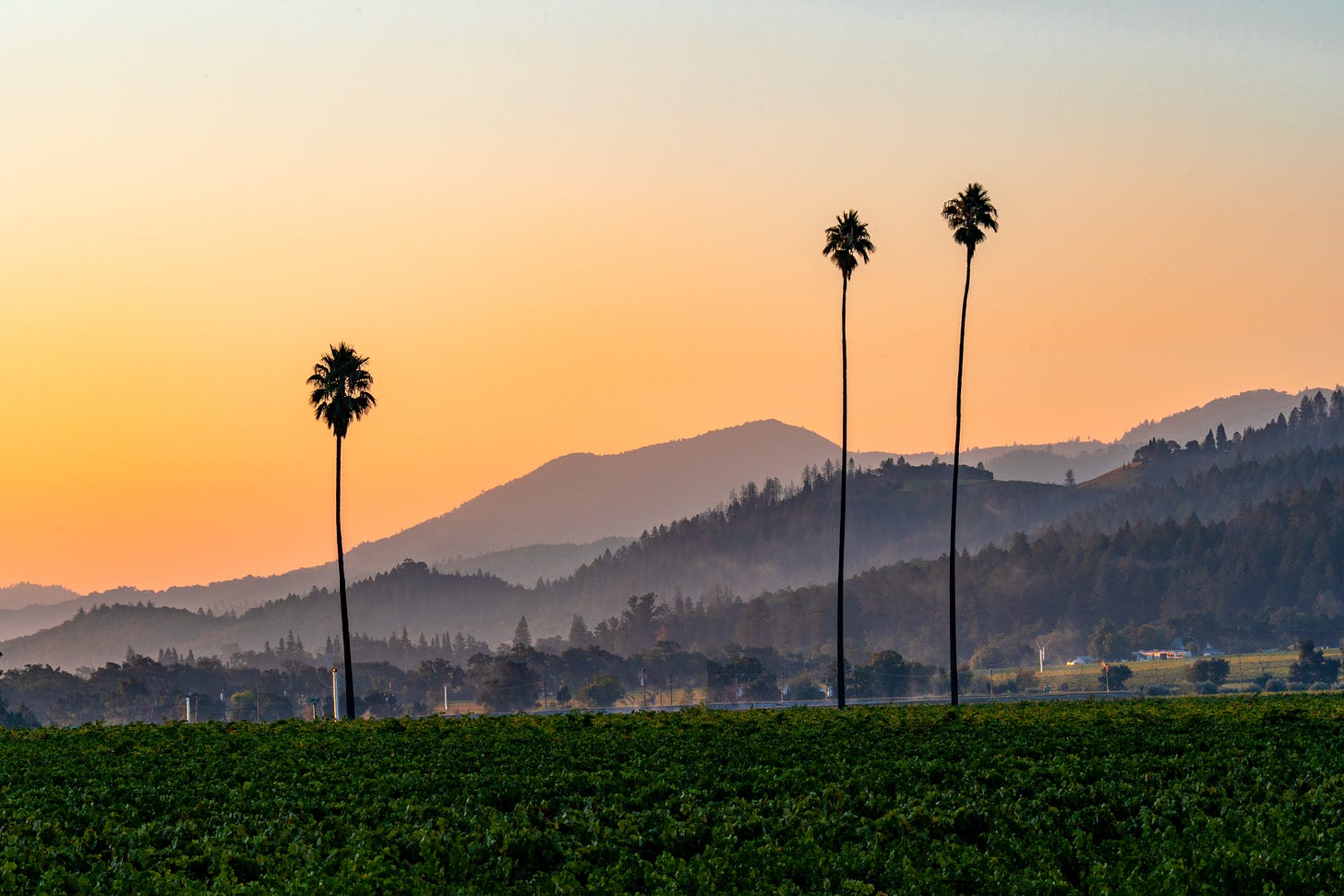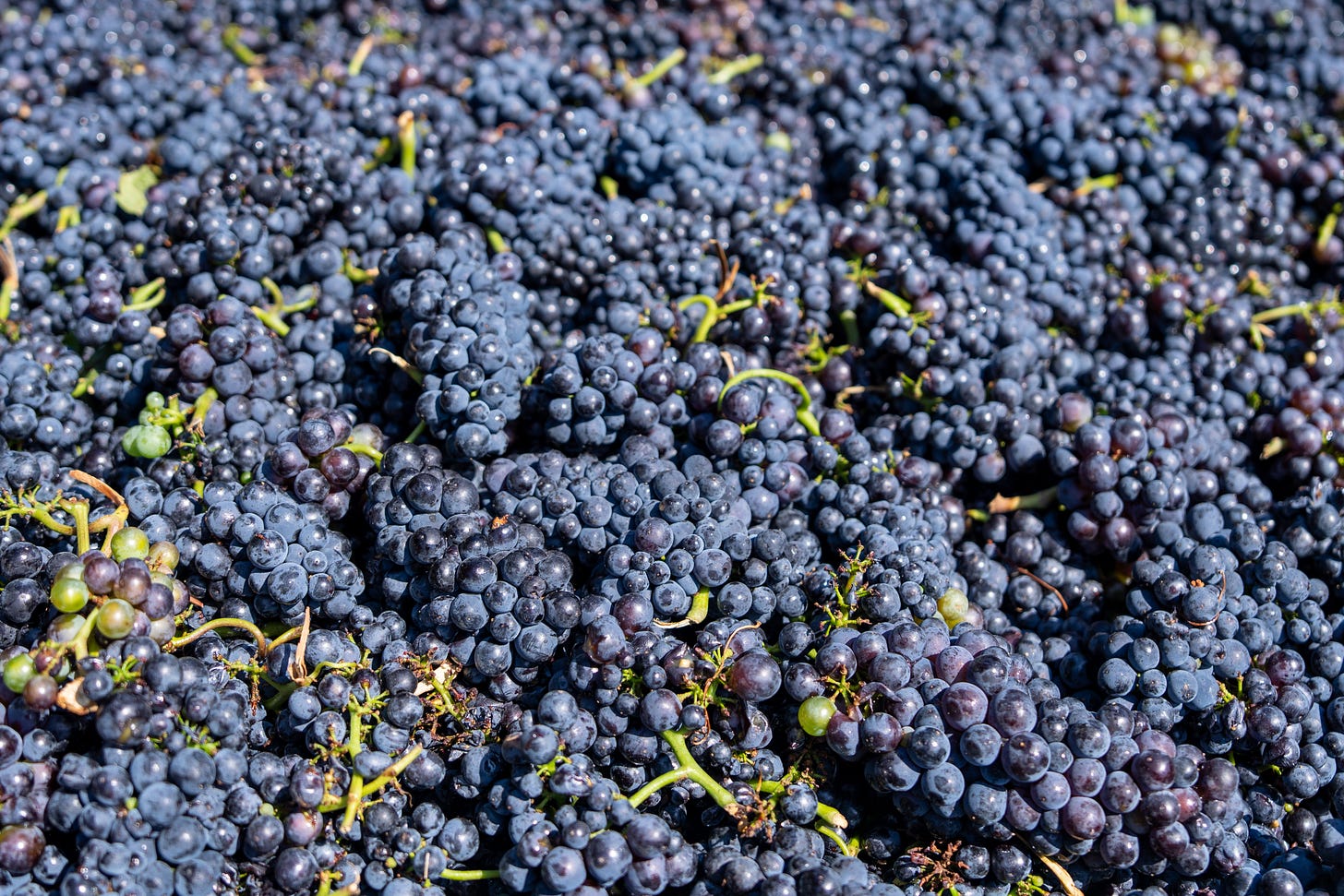NAPA VALLEY, Calif. — The Napa Valley cabernet is near perfect. But for decades it has flown under the radar. Historically, it has gotten scores in the mid-90s. For many wine collectors who tend to be label buyers, its scores have not been high enough to consider this producer as iconic, which is why I always consider it to be.
Most collectors do not consider anything less than a 97-point wine to be worth buying. The producers of this wine stand by it because it is made to reflect the soils it comes from, and to that end it delivers everything a great wine should.
All 100-point wines are revered. I must be pretty dense because I can’t make any sense out of that kind of reasoning. I don’t drink numbers. I drink wine. And for me, wine accompanies food. So a fine wine must be made with the proper constituents that allow it to work with savory foods. I believe 100-point wines are made to be explosive, instantly lovable, cherished for their lavishness, their intensity. They go from 0 to 60 in less than two seconds. In automotive terms, they are performance vehicles. There may be a kind of exhilaration in that; I wouldn’t know.
For me, a great wine requires introspection. I have viewed wine professionally for 50 years. I try a lot of wines that others swoon over. Most are, to me, soporifics. Others love them, but I see them as liquids best used as one might a cocktail, to be consumed while waltzing around the room with jollity, quips at the ready. Introspection is optional.
To paraphrase Justice Potter Stewart’s line about pornography, I know a great wine when I smell and taste one. Besides being true to its soil and its genetic heritage, a great wine has balance. I have almost never tasted a 100-point wine that was balanced. I consider that a wine is “great,” whatever that term means, when it displays one other element that I consider mandatory – complexity. That comes from a blessed plot of soil, a caring grower, a sensitive winemaker and a respectful wine-lover who esteems appropriate bottle aging, whether it be decades or just months.
For me, greatness relies more on nuance than it does on impact. Unfortunately, however, impact sells faster than nuance.
What it all comes down to for me is that subtlety is not only an essential component of all great wines, but it is also a trait rarely acknowledged by the point purveyors, most of whom seem to be inordinately competitive when they dole out excessively high scores. We now live in an era of score inflation. Subtlety is obliterated when a wine has an alcohol level of 16% and/or residual sugar and/or a high pH. I see these concoctions as producing amateur examples of dessert wines. Which, curiously, usually end up with high scores.
So where does a truly great wine come from? It starts with the soil and the care with which plants are tended. Growers almost never get appropriate recognition for their efforts. Vineyard designations are nice, but the names of the specific farmers never being mentioned has always irked me. These are the people who do the work in January, March and May, year-round tenders of leaves, canes, buds, and irrigation systems and fighters of blight, blotch and birds.
In France, there is no word for winemaker. The closest thing French has is “vigneron.” It’s a difficult term to define because it includes people who grow grapes specifically to make wine. Often the term is used for people whose grapes make fine wine, so they have a vested interest in the quality of the final product. It is also used for people who spend most of their time in vineyards tending vines and who also make the final product.
A website called “Social Vignerons” has an in-depth definition of the term. In part it says, “behind the term vigneron is generally the underlying pride of growers that take the efforts to grow their grapes … with the intention of turning them into wine. They are the ones that pride themselves in understanding the whole process, and often in understanding how every operation in the vineyard has consequences in the final wine.”
I believe the best wines made in California today are being made by people (winemakers) who spend most of their time in the vineyard communicating with the grower. It is not a bad idea to understand botany and plant physiology.
There’s an old saying in this business that the best fertilizers in a vineyard are the footprints of the winemaker. I once was on a walking tour of a particularly steep vineyard on a day when the temperature was close to 100 F. All I could think of was getting back to the air-conditioned truck. The winemaker saw a problem. He paused, knelt down and began to fix a balky drip-irrigation emitter. He spent 10 minutes at it while I finished my ration of by-then-warm water.
“I’ve spent my whole life in the vineyard,” says Sonoma County winemaker Greg La Follette, “and I’ll probably die there.”
Early each year for decades, Greg arises at sun-up and drives to remote mountain vineyards to do the difficult job of suckering. It’s a job usually left to vineyard crews, but Greg says, “Some crews need lessons in how to do it right.” Winemaker Clark Smith said he understood – “Suckering is like trying to make a soufflé – you can’t learn how to do it by just reading a book.”
After talking with growers for many decades, I have come to believe that most live by a simple thesis that boils down to three simple words that have absolutely nothing to do with scoring a wine, declaring it to be great or charging $500 for a bottle: “Less is more.” Certainly not less in terms of precise delivery of fruit and certainly not less in terms of food compatibility, as well as a wine’s pleasure potential. Most of the grape-growers with whom I have spoken would rather see their grapes make wines with less alcohol than most of today’s wines; they would also prefer wines with more personality and with less oak influence.
Almost every excellent grape-grower will use the same word when speaking about growing grapes to make great wines — balance. Grapevines must be balanced. So must wines. It all comes down to an equilibrium that growers instinctively know. And they get rather persnickety if a winemaker suggests some other course of action.
Balanced vines can make balanced wines, which I believe are the best wines. That means alcohol levels are more moderate as long as the harvest date is properly chosen. That means fruit levels can be appropriate to the variety selected. And it means that there is a harmony of flavors, not just ripe but with hints of underripe and overripe.
And there also can be some extraneous aromatics and tastes that make the wine more reflective of the grapes and the soils delivered in that particular year, vineyard and vintage character.
If a grower has a choice, picking fruit earlier is usually a better strategy than picking it later. I once heard a winemaker say that if you pick fruit too early, the wine will have underripe aromas. Hogwash. If that were true, most of the great rosé wines that we produce around the world would be underripe because almost all of them are picked early, well before red wines can be produced.
To make a fine example of a balanced wine, a valid strategy is to wait until most of the grapes have attained the proper maturity on the vine but before too much maturity has been allowed to develop, which could overpower the natural fruit components. This is an extremely difficult thing to understand, and it calls for a lengthy analysis.
By coincidence, the brilliant British wine writer Tim Atkin wrote a column a week ago about Paula Fandiño of Mar de Frades, a wonderful Spanish producer of wine from the alberiño grape. Wrote Atkin, “There’s a lot of discussion … about the best way to [make alberiño in Rías Baixas, Spain]. But what really matters is the raw material, Paula told me, not what you do to it.
“Less is more – up to a point. Good winemakers know when to intervene and why. Bad ones can’t stop intruding or, at the other end of the scale, believe that by doing nothing they are magically making more ‘natural’ wines. The better the grapes, the more the winemaker should disappear. Their only job is to curate and bottle greatness.”
I once asked Robin Day, former chairman of Orlando Wines in Australia, the secret to his great portfolio. He replied, “Get good grapes and don’t trip on the mat.” Maynard Amerine, who was chairman of the enology department at UC Davis, once said that winemakers probably make 200 decisions on every wine they produce and that half of those decisions are to do nothing.
Atkins’ article reminded me that greatness clearly is possible with wines such as alberiño, not to mention hundreds of other grapes. Numbers are unnecessary. All you have to do is smell and taste the wine to know. And if you can’t tell what a wine is all about, chat with someone who knows the particular producer or the grape variety or the region or some other factual information that you can get either online or from a savvy retailer or sommelier. The more you know about a particular wine, the more enjoyable it can be.
A raw number on a wine may be comforting if you’re spending outrageous amounts of money on a bottle, but it doesn’t say anything at all about the style of wine or whether it will age.
My requirements are pretty simple. I believe less is more. I believe subtlety, nuance and balance are more important than concentration. And I believe that it is not necessary to spend outrageous sums to have a sublime wine experience. I prefer going from zero to 60 in minutes, not seconds.
Berger’s Wine Discovery of the Week
2019 Smith-Madrone Cabernet Sauvignon, Spring Mountain District ($65): The aroma here is classic 1970s Napa Valley, particularly with the overwhelming complexities that add to the first and most powerful scent — dark fruit, cassis, blackberry and even a trace of loganberry. There also are traces of dried herbs, aged pipe tobacco and tree-ripened olives. In short, it is complex, which stands to reason since it is already 5 years old and still in perfect condition for aging. This producer has always made exceptional wines, including an alluring, food-friendly chardonnay and an off-dry riesling that develops beautifully in the bottle. I have enjoyed this cabernet for decades because it almost always has a sprightliness and a vitality based on modest alcohols (this is just over 14%) and bright acidity. There is a trace of oak, but it is well under the line. I have varying vintages of this wine dating back to 1989, a year some people disparaged, but with beautiful mountain-grown fruit, this producer made a brilliant wine. Given the ridiculous prices of so many cabernets from Napa that simply do not stand the test of time, Smith-Madrone’s version is a relative bargain.
If today’s story captured your interest, explore these related articles:
Dan Berger’s Wine Chronicles: Napa and Sonoma as True Vinous Siblings
Dan Berger’s Wine Chronicles: The Nostalgia and Nonsense of Barrel Tastings
Dan Berger’s Wine Chronicles: The Evolution and Art of Winemaking
Dan Berger’s Wine Chronicles: How Wine Is Packaged Can Affect Its Quality
Dan Berger has been writing about wine since 1975.










excellent article, dan, with which I mostly agree. Two minor comments. First paragraph alludes to a Napa Cabernet; which one isn't named (though I now assume you are talking about Smith Madrone.
Secondly, it's Albariño not alberino. Auto Correct? Jb